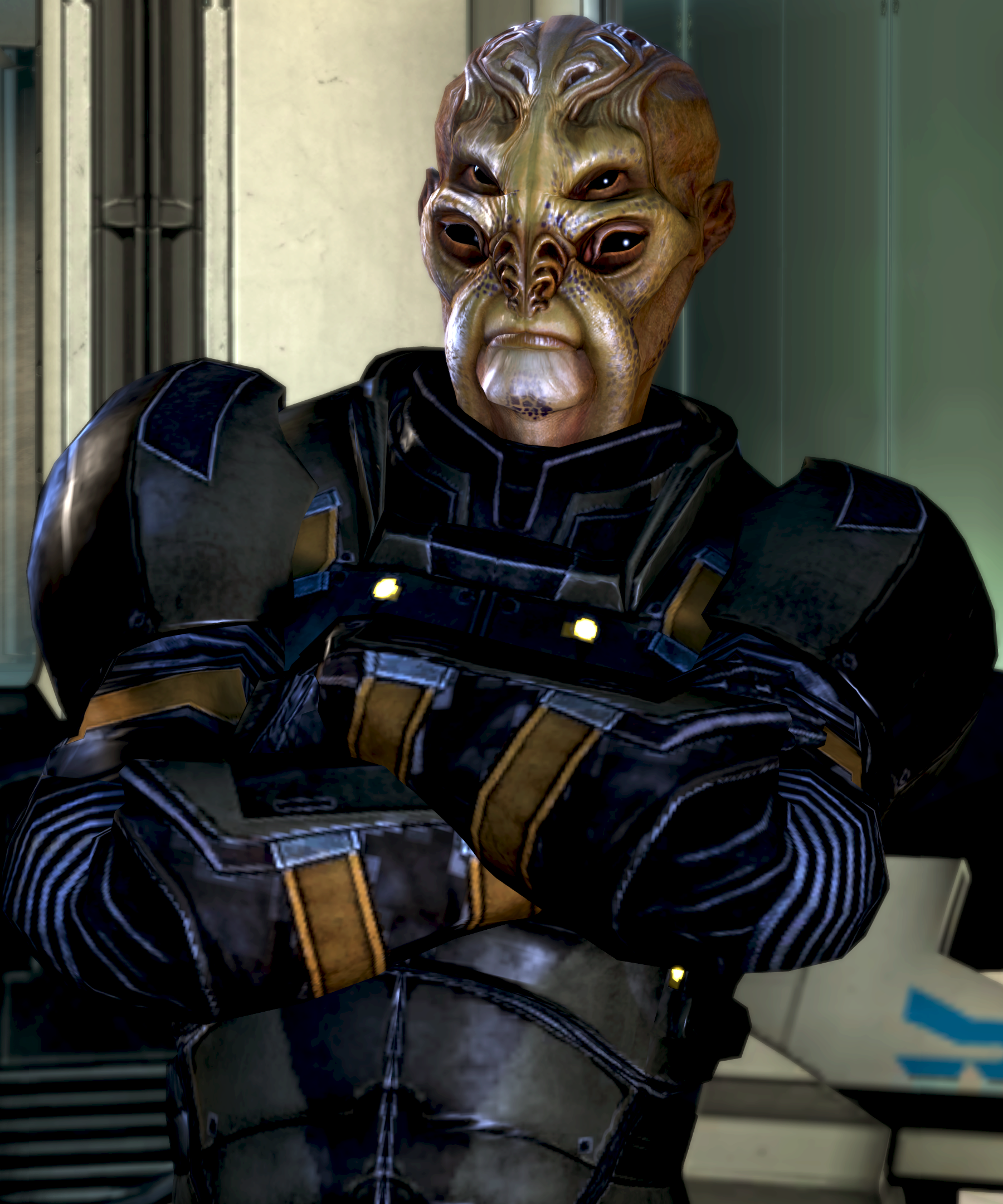Post by realsurvivor686 on Oct 1, 2018 17:07:43 GMT
Hello all,
Context: Am utilizing pre-existing assets (texture maps and meshes) to create a custom armour set (using individual armour pieces for Shepard) for Ashley. However, I find that there are noticeable texture map seams on the existing model (see attached screenshot)
Question: Are there any sure-fire methods to prevent and fix texture map seams. Is there something wrong in my workflow (See below) that is causing these seams to appear?
Workflow:
For Mesh:
1. Import selected vanilla-meshes
2. Using 3DS Max, I attach the meshes to each other, convert the resulting model to a single mesh (Right click -> Convert to -> Convert to Editable Mesh)
3. Using 3DS Max I manually edit and align the UVW Maps
4. Convert again to a single mesh (Right click -> Convert to -> Convert to Editable Mesh), in order to 'bake' the UVW Map
5. Using Skin Wrap, I import the correct bone weights and then finalize it
6. I then Ensure that the entire model is using only 1 material group and 1 smoothing group (Modifier List -> Editable Mesh -> Element -> Material -> Set ID to 1 -> Smoothing Groups (with clear all) -> Select "1")
7. Using the Actor X utilityI export as a psk file
8. Using UDK convert the PSK into a UPK file, with the appropriate LOD Levels
For Normal Texture map:
1. Using the Dirext x in-menu utility, I convert the vanilla normal maps textures (in V8U8 format) to a DXT1 texture (Windows Explorer -> Right Click -> Convert to File Format -> Pixel Format -> DXT1)
2. Import the resulting "V8U8-to-DXT1" textures into Gimp and assemble them into a shape that matches my UVW Map
3. Export the resulting image as a (export as PNG, then export the png as a DXT1 texture) DXT1 Texture map
4. Using the Direct X Texture tool, convert the texture map from DXT1 to V8U8 (Format -> Change Surface Format -> "Signed 16bit V8U8")
Context: Am utilizing pre-existing assets (texture maps and meshes) to create a custom armour set (using individual armour pieces for Shepard) for Ashley. However, I find that there are noticeable texture map seams on the existing model (see attached screenshot)
Question: Are there any sure-fire methods to prevent and fix texture map seams. Is there something wrong in my workflow (See below) that is causing these seams to appear?
Workflow:
For Mesh:
1. Import selected vanilla-meshes
2. Using 3DS Max, I attach the meshes to each other, convert the resulting model to a single mesh (Right click -> Convert to -> Convert to Editable Mesh)
3. Using 3DS Max I manually edit and align the UVW Maps
4. Convert again to a single mesh (Right click -> Convert to -> Convert to Editable Mesh), in order to 'bake' the UVW Map
5. Using Skin Wrap, I import the correct bone weights and then finalize it
6. I then Ensure that the entire model is using only 1 material group and 1 smoothing group (Modifier List -> Editable Mesh -> Element -> Material -> Set ID to 1 -> Smoothing Groups (with clear all) -> Select "1")
7. Using the Actor X utilityI export as a psk file
8. Using UDK convert the PSK into a UPK file, with the appropriate LOD Levels
For Normal Texture map:
1. Using the Dirext x in-menu utility, I convert the vanilla normal maps textures (in V8U8 format) to a DXT1 texture (Windows Explorer -> Right Click -> Convert to File Format -> Pixel Format -> DXT1)
2. Import the resulting "V8U8-to-DXT1" textures into Gimp and assemble them into a shape that matches my UVW Map
3. Export the resulting image as a (export as PNG, then export the png as a DXT1 texture) DXT1 Texture map
4. Using the Direct X Texture tool, convert the texture map from DXT1 to V8U8 (Format -> Change Surface Format -> "Signed 16bit V8U8")
5. Import the normal texture, via me3explorer
Current State (Look at the arms in particular)
<img src="http://
<script async src="//s.imgur.com/min/embed.js" charset="utf-8"></script>" alt="" style="max-width:100%;">

I would be grateful for any advice, tips or resources in this regards
Regards
realsurvivor686




